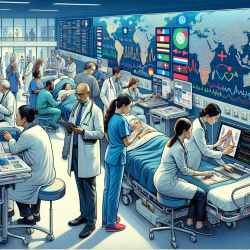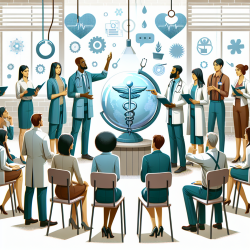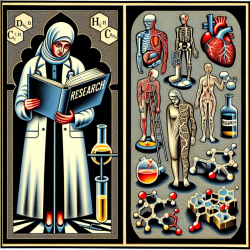Introduction
In the ever-evolving landscape of healthcare, understanding the intricacies of emergency care systems is paramount for practitioners aiming to improve their skills and adapt to global standards. The research article "Characterizing Emergency Departments to Improve Understanding of Emergency Care Systems" provides a comprehensive framework for examining emergency departments (EDs) across various countries. This blog explores how practitioners can leverage these insights to enhance their capabilities and encourages further research in this critical area.
Key Insights from the Research
The research emphasizes the need to shift focus from system-wide characteristics to ED-specific features. By doing so, it highlights the diversity in emergency care delivery methods and provides a nuanced understanding of how different EDs operate. The study identifies four main characteristics for describing EDs:
- Location: Differentiating between hospital-based and freestanding EDs.
- Layout: Understanding contiguous versus non-contiguous designs.
- Operational Hours: Distinguishing full-time, part-time, seasonal, and alternating EDs.
- Patient Type: Identifying general, adult, and pediatric EDs.
These characteristics offer a detailed yet concise picture of emergency care delivery, allowing practitioners to appreciate the local and international variations in ED operations.
Implementing Research Outcomes
Practitioners can enhance their skills by integrating these insights into their practice. Here are some actionable steps:
- Adopt a Holistic View: Understand that emergency care systems vary widely. Practitioners should be open to learning about different ED models and adapt their approaches accordingly.
- Focus on Local Context: While international standards are important, practitioners should tailor their strategies to fit the local healthcare landscape, acknowledging unique challenges and opportunities.
- Engage in Continuous Learning: Attend conferences, webinars, and workshops that focus on international emergency medicine to stay updated with global trends and innovations.
- Collaborate and Network: Build relationships with peers in different countries to exchange knowledge and best practices, enriching your understanding of diverse emergency care systems.
Encouraging Further Research
The research paper serves as a starting point for further exploration into the complexities of emergency care systems. Practitioners are encouraged to delve deeper into specific areas such as:
- Comparative studies of ED operations in urban versus rural settings.
- Impact of ED layout on patient outcomes and staff efficiency.
- Role of technology in enhancing ED capabilities and patient care.
By pursuing these avenues, practitioners can contribute to the broader understanding of emergency care and drive improvements in their own practice.
Conclusion
The characterization of emergency departments offers valuable insights for practitioners seeking to refine their skills and adapt to global healthcare standards. By embracing the diversity of ED operations and engaging in continuous learning, practitioners can enhance their effectiveness and contribute to the advancement of emergency care systems worldwide.
To read the original research paper, please follow this link: Characterizing emergency departments to improve understanding of emergency care systems.










